Whitehot Magazine
September 2025
"The Best Art In The World"
"The Best Art In The World"
September 2025
Celebrating Robert Rauschenberg
By Manuela Annamaria Accinno June 12, 2025
“Painting relates to both art and life. Neither can be made. I try to act in that gap between the two.”
This statement by Rauschenberg reveals a bold and profound conception of art as a space of transition, of hybridization, of interconnection between the aesthetic dimension and everyday experience. It suggests an image of an art that is not merely a static product confined within the confines of the canvas, but that instead inserts itself and comes alive in the space in between, that transitional sphere in which the spheres of life and work meet and merge. In this context, the space he indicates - that which separates painting from living experience - is configured as a liminal territory, a crossroads between image and experience, between the symbolic and the concrete. It is no longer a boundary delimited by aesthetic or formal barriers, but rather a field of possibilities where art can act directly on life, modify its parameters, make itself accessible as a terrain of exploration and transformation.
This “acting” means that art, for Rauschenberg, possesses a capacity to intervene in reality and to infiltrate it, to bond with life without passively suffering its impositions. It is an action that is placed in the middle, in that zone of tension between relationship and detachment, between separation and integration. The artist thus becomes a bridge-builder, an explorer of apparent boundaries
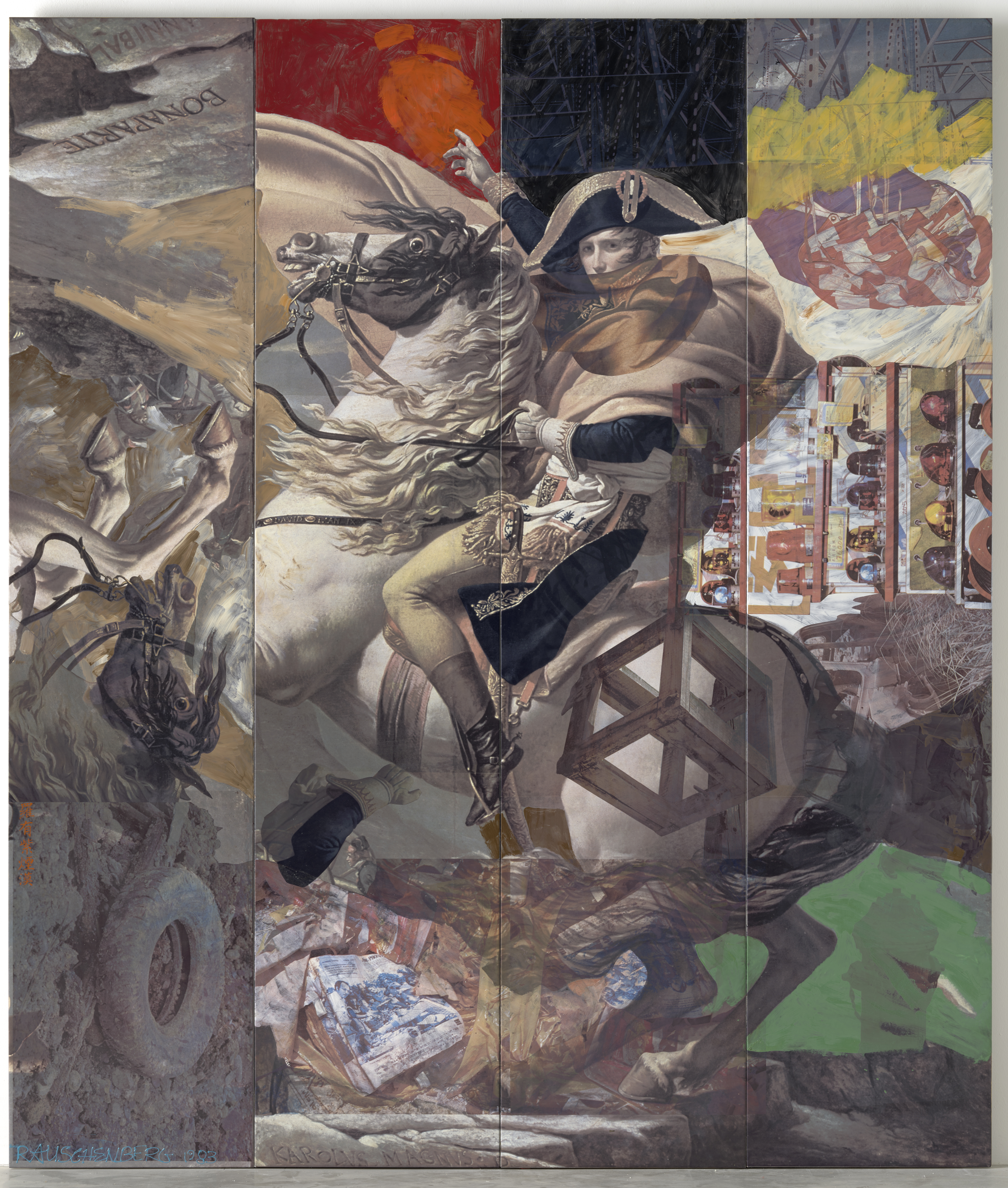
Robert Rauschenberg, “Able Was I Ere I Saw Elba”, 1983 Ceramic 270,3 x 231,1 cm (106,4 x 91 in), © Robert Rauschenberg Foundation / ARS, New York, 2025 Galerie Thaddaeus Ropac, London · Paris · Salzburg · Milan· Seoul, Photo: Ulrich Ghezzi
If we articulate this reflection in the current scenario, even deeper implications emerge. Contemporary society is going through an intense mutation of social, political, virtual and sensory spaces. Digitalization, globalization, the proliferation of networks and platforms for participation open up new horizons, but at the same time increase distances and separations. Art has lost its reserve position, becoming a means of almost instantaneous interaction between individuals and contexts, a language that mixes and fragments, but at the same time can act as a catalyst for awareness and change. In this situation, the space that opens up between art and life becomes a battleground and identity reconstruction, a strategic place for rebuilding senses and relationships.
The artist, in this view, is no longer a mere author who paints or sculpts, but an actor acting in the intermediate space between the work and the social environment, between the self and the other. His action becomes an intervention in the context, a way of acting at the juncture between art and life, as Rauschenberg reminds us.
The interaction between the two poles, in this perspective, takes the form of an attitude, an existential approach that recognizes in creativity the potential to modify our view of the world and of ourselves. The space-time dimension is dilated, making art a continuous process of listening and re-writing of human conditions. The space that opens up between the two poles thus becomes a crucible of possibilities, where the individual can experiment with new forms of presence, relationship and meaning. Art, in this way, is transformed into a practice of social and human responsibility, capable of releasing creative energies in moments of crisis and activating processes of personal and collective transformation. Robert Rauschenberg urges us to recognize that art lies at the heart of contemporary challenges.
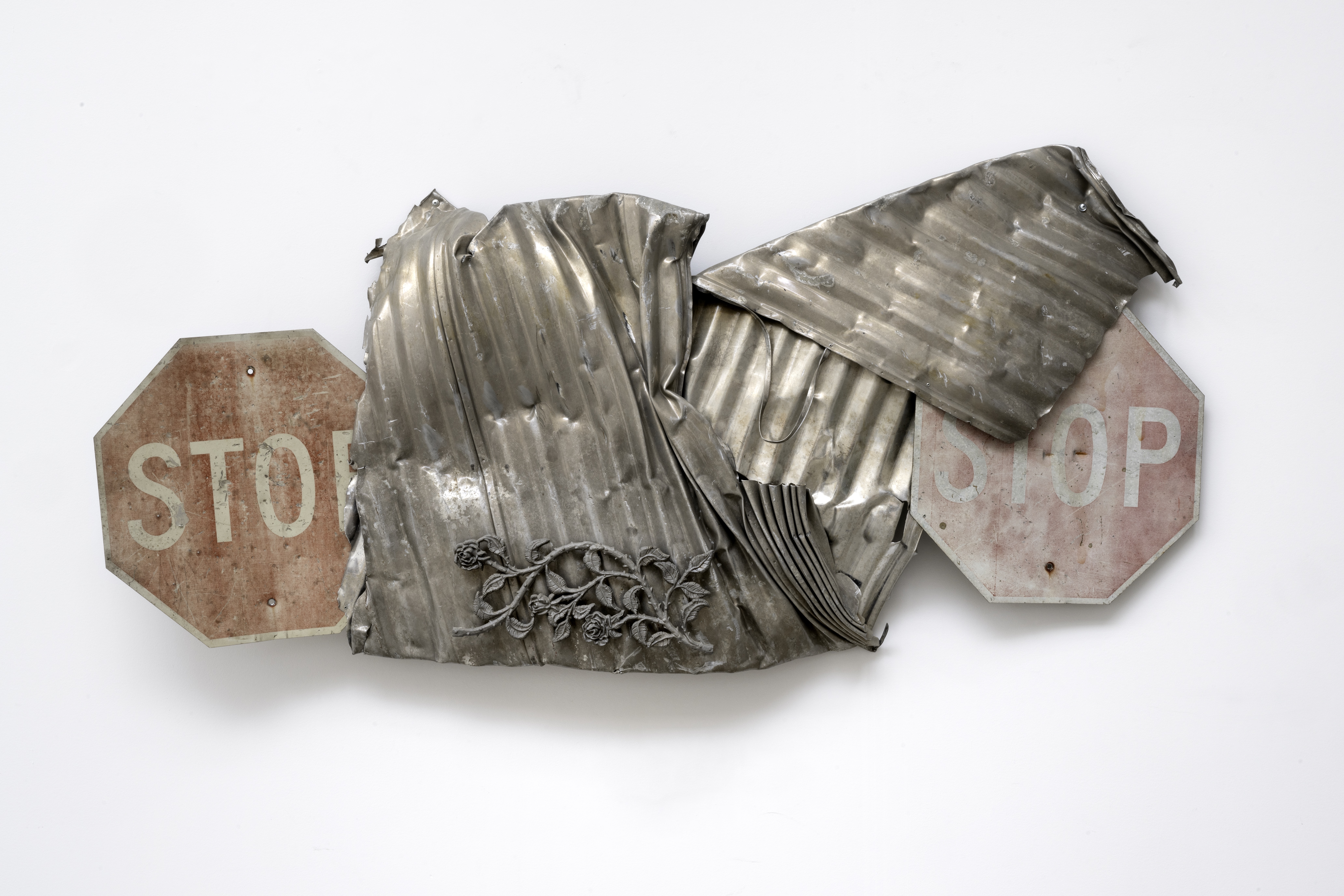
Robert Rauschenberg, “Summer Glut Fence”, 1987, Assembled metal parts and plastic objects 107 x 220 x 19 cm, © Robert Rauschenberg Foundation / ARS, New York, 2025, Courtesy Galerie Thaddaeus Ropac, London · Paris · Salzburg · Milan · Seoul Photo: Charles Duprat
No longer an abstract entity or reserved for the few, but a polyphonic field of action in which man can recognize and re-appropriate his active role in the world. The city of Milan has organized and realized two great exhibitions dedicated to celebrating the exceptional talent of Robert Rauschenberg. These important events were conceived as an opportunity to explore and highlight the work of one of the most innovative and influential artists of contemporary art, emphasizing his fundamental contribution in redefining the limits of 20th century aesthetics and artistic language. The Museo del Novecento in Milan inaugurates an exhibition that, until 29 June 2025, offers a unique opportunity to explore and deepen the work of Robert Rauschenberg, a figure of fundamental importance in the history of 20th century art. This artistic project, of an innovative and unprecedented nature, aims to establish, for the first time, a profound and articulate dialogue between Rauschenberg's creations and some of the most significant and representative works held in the museum's collection, thus creating a cultural bridge between two distinct but complementary expressive worlds.
The exhibition takes a detailed approach to the narrative weaving that interweaves the American artist's experimental and revolutionary vision with the rich and complex universe of 20th-century Italian art, weaving a plot that not only highlights Rauschenberg's peculiarities and innovations, but also highlights the mingling and tensions between the different aesthetic and cultural traditions that characterized the artistic panorama of that era. The exhibition was advised and supported by the Robert Rauschenberg Foundation. While the second exhibition takes place in the prestigious and evocative rooms of the Gallerie d'Italia, Intesa Sanpaolo has opened, until 5 October 2025, an exhibition entitled 'An Unexpected Collection. The New Art of the Sixties and a Homage to Robert Rauschenberg".
This important exhibition, which includes more than sixty works, takes an in-depth journey through the innovative radical experimentation that characterized the 1960s, before outlining the most significant and influential developments of the following decade, thus offering a comprehensive and articulate overview of the evolution of contemporary art during those crucial periods of cultural and artistic transformation.
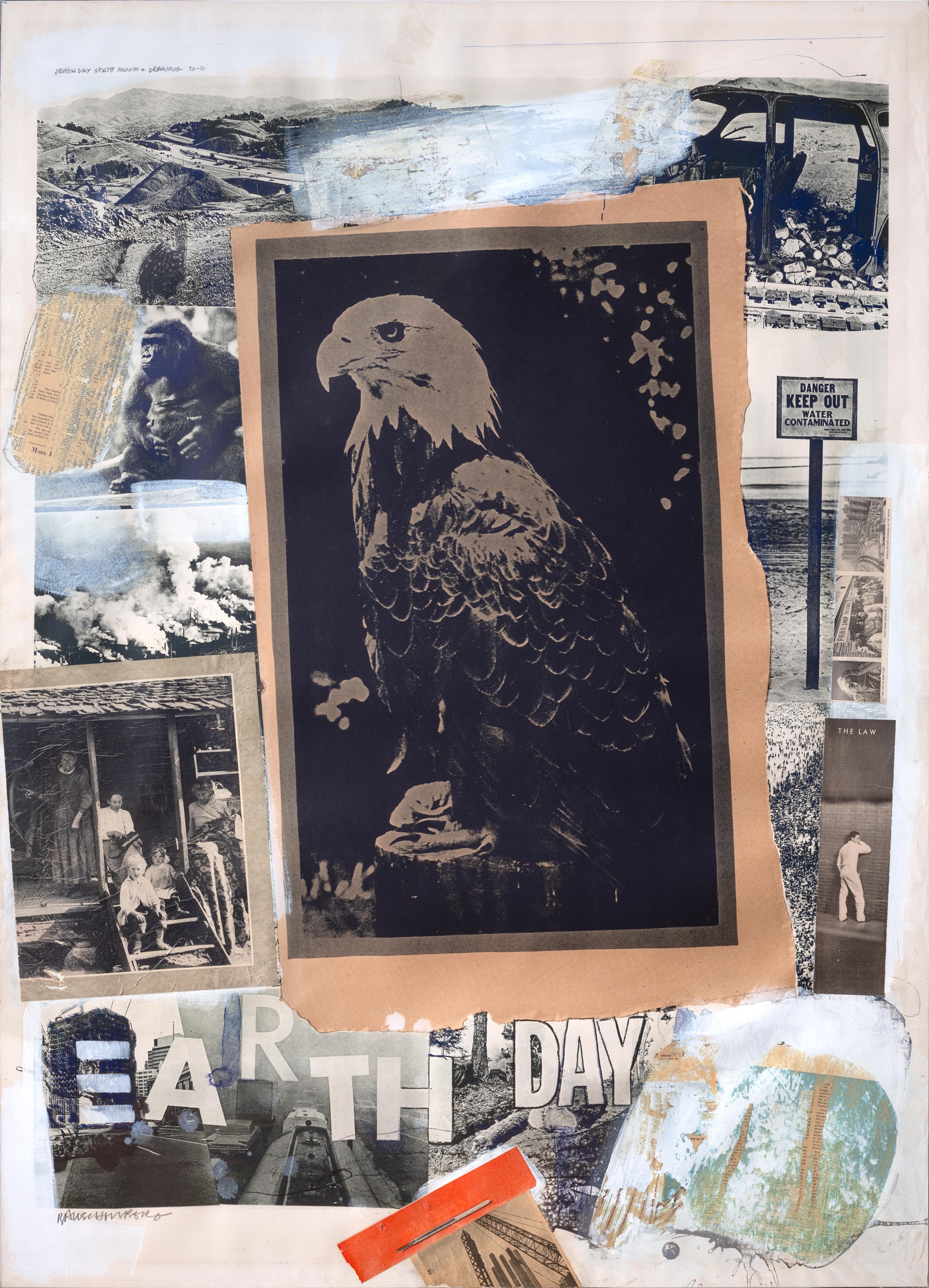
Robert Rauschenberg, “Earth Day”, 1970-1971, lithograph with chine collé, 132 x 95 cm, Luigi e Peppino Agrati Collection-Intesa Sanpaolo, ©Robert Rauschenberg Foundation, Credit: Ph Luca Carrà, Milano
The beating heart of the entire exhibition takes place in the prestigious and evocative Salone Scala, a space entirely dedicated to the homage and memory of the famous and innovative artist Robert Rauschenberg. For the first time, it highlights and acknowledges the deep and varied ties that the great artist had with Italy and, more specifically, with Peppino Agrati, a recognized figure as a close friend and passionate collector. This relationship, more than any other, made possible the creation of this room, which exhibits a selected nucleus of seventeen works, among which the famous masterpiece “Blue Exit” of 1961 stands out, which takes on a symbolic and representative meaning of that relationship, embodying at the same time the talent and innovation that characterized Rauschenberg's work and his inflexible experimental spirit.
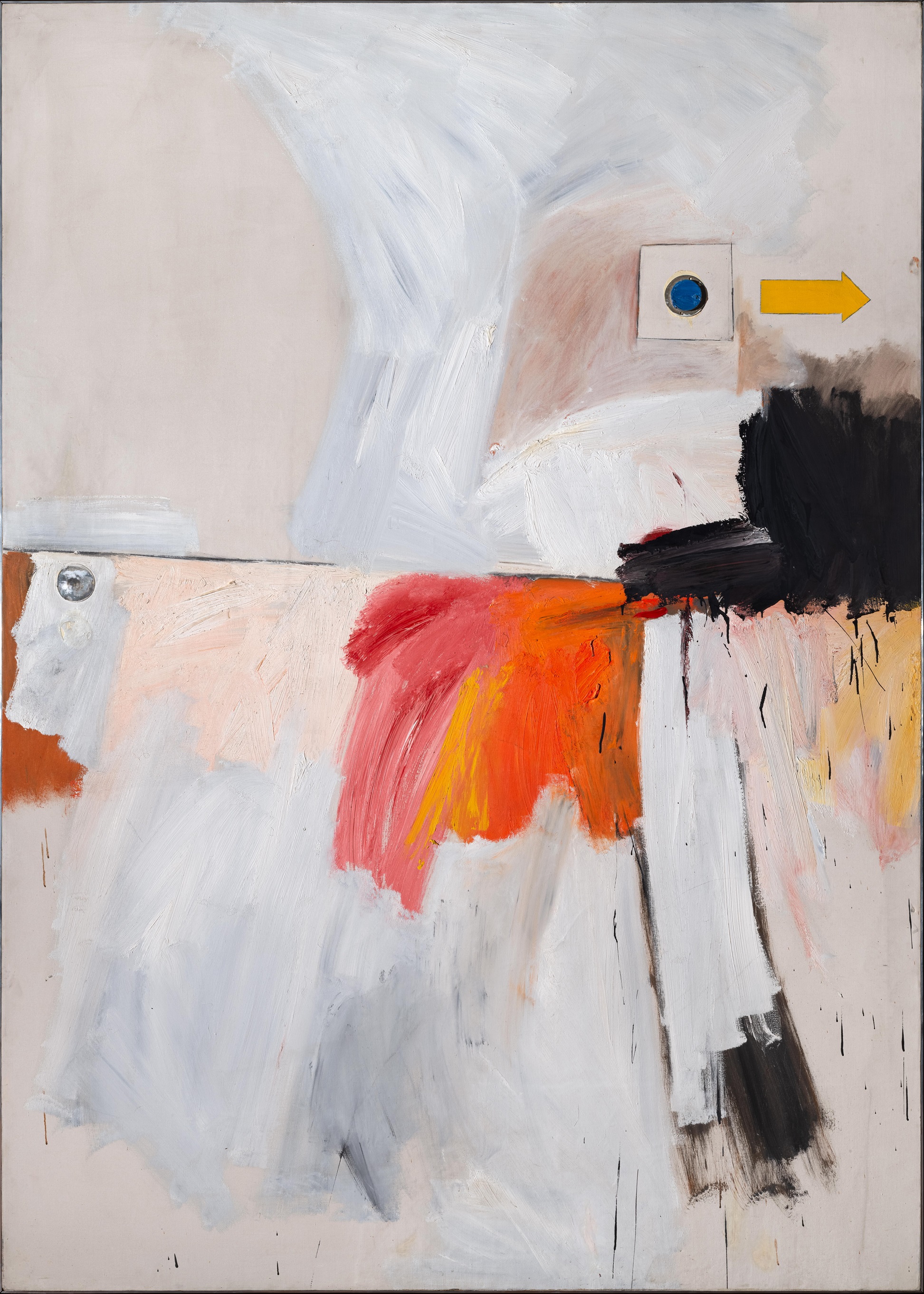
Robert Rauschenberg, “Blue Exit”, Combine: oil and graphite on canvas, 213.5 x 153.5 cm, Luigi e Peppino Agrati Collection - Intesa Sanpaolo, ©Robert Rauschenberg Foundation Credit: Archivio Patrimonio Artistico Intesa Sanpaolo / Ph Paolo Vandrasch, Milano
Alongside the imposing large-format works and drawings, the exhibition presents a series of lithographs of extraordinarily refined quality, which not only illustrate and document the technical and experimental development that Rauschenberg pursued and innovated throughout his career, but also reveal his profound relationship and continuous dialogue with images and the fundamental themes of the society and politics of the time. This is the first time that the entire body of works by Robert Rauschenberg, from the Luigi and Peppino Agrati Collections, has been presented to the public.
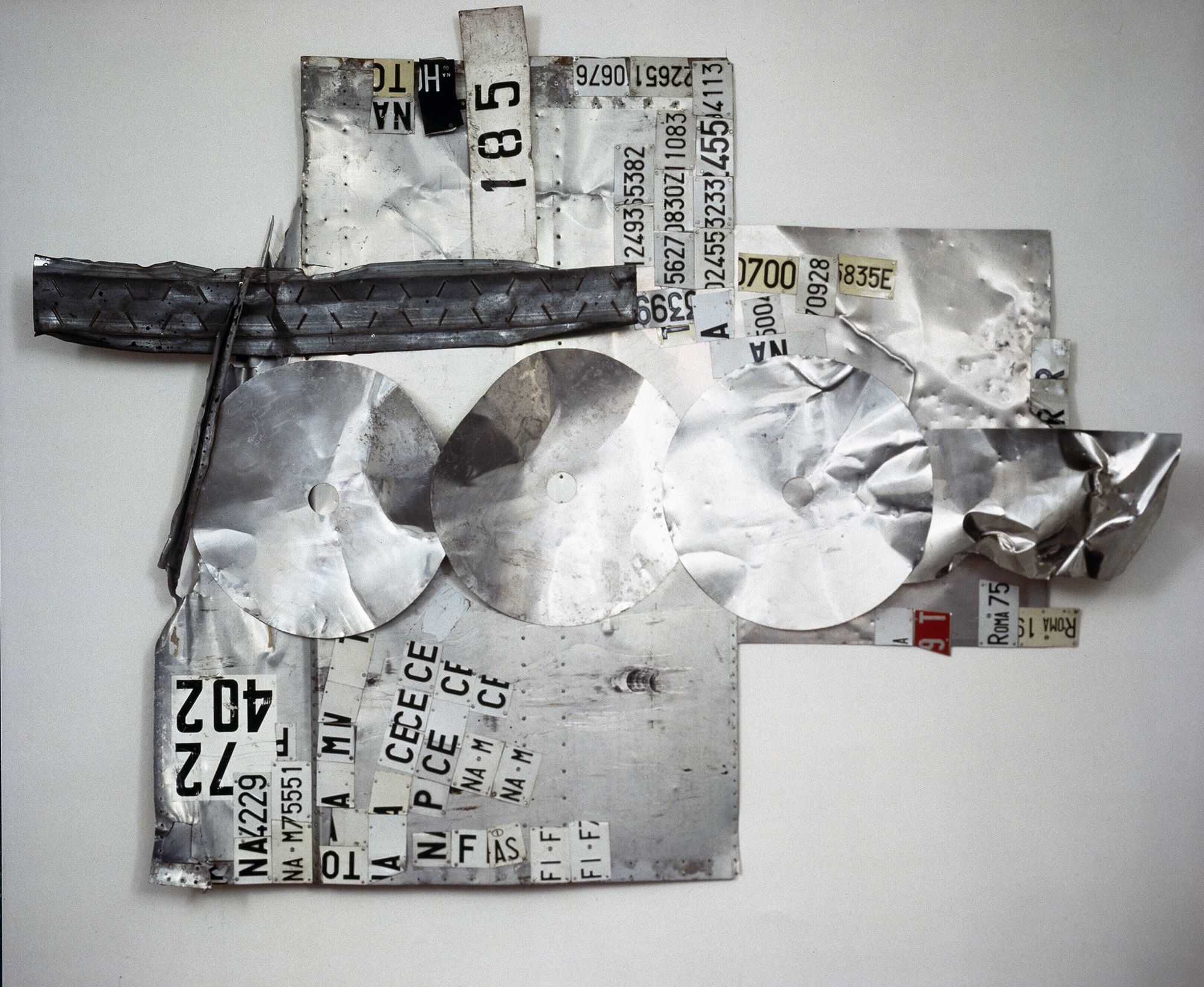
Robert Rauschenberg, “Trasmettitore Argento Glut (Neapolitan)”, 1987, Assembled metal, 249 x 320 x 32 cm, Luigi e Peppino Agrati Collection - Intesa Sanpaolo, ©Robert Rauschenberg Foundation

Manuela Annamaria Accinno
Manuela Annamaria Accinno, born and raised in Milan, is an art historian and critic with a degree from the University of Milan. She has been actively collaborating for several years with radio stations and magazines specializing in the field of art.
view all articles from this author









